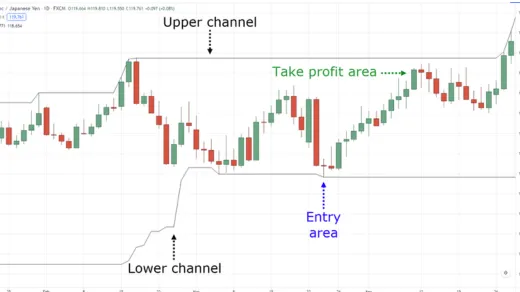Best Indicator for Swing Trading: Unveiling the Key to Successful Trades

Swing trading has gained significant popularity among traders aiming to capture short- to medium-term price movements in the financial markets. As an approach that falls between day trading and trend following, best indicator for swing trading requires a keen understanding of market dynamics and the right tools to make informed decisions. In this article, we’ll dive deep into the world of swing trading and explore the best indicator that can potentially enhance your trading success.
Introduction to Swing Trading
Swing trading is a trading style that aims to capitalize on short- to medium-term price fluctuations. Unlike day traders who close their positions by the end of the trading day, swing traders hold their positions for several days or even weeks. This approach allows traders to capture more substantial price movements while avoiding the noise and rapid changes of intraday trading.
The Significance of Technical Indicators in Swing Trading
Technical indicators play a crucial role in swing trading, providing traders with valuable insights into price trends, momentum, volatility, and potential reversals. By analyzing these indicators, traders can make more informed decisions, leading to better entry and exit points.
Exploring the Relative Strength Index (RSI)
The Relative Strength Index (RSI) is a momentum oscillator that measures the speed and change of price movements. RSI values range from 0 to 100, indicating overbought conditions when the RSI is above 70 and oversold conditions when below 30. Swing traders often use RSI to identify potential trend reversals and confirm price movements.
Moving Averages: A Fundamental Swing Trading Indicator
Moving averages are essential tools in swing trading. They smooth out price data to reveal underlying trends and help traders identify support and resistance levels. The intersection of short-term and long-term moving averages often indicates potential entry or exit points.
Bollinger Bands: Riding the Volatility Waves
Bollinger Bands consist of a moving average and two standard deviation bands. These bands widen during periods of high volatility and narrow during low volatility. Traders use Bollinger Bands to identify potential breakout and reversal points.
MACD (Moving Average Convergence Divergence) for Precise Entries and Exits
MACD is a versatile indicator that combines moving averages to reveal changes in momentum. The MACD line and signal line crossovers are used to signal potential buy or sell opportunities. Swing traders rely on MACD to confirm trends and make well-timed trades.
Fibonacci Retracement: Unveiling Price Levels
Fibonacci retracement levels are horizontal lines that indicate potential support and resistance levels based on the Fibonacci sequence. Swing traders use these levels to anticipate price movements and plan their trades accordingly.
Stochastic Oscillator: Gauging Overbought and Oversold Conditions
The stochastic oscillator compares the most recent closing price to the price range over a specified period. It provides insights into overbought and oversold conditions, helping swing traders identify potential reversals.
Ichimoku Cloud: A Comprehensive Trend Analysis Tool
The Ichimoku Cloud is a comprehensive indicator that provides insights into trend direction, momentum, and support/resistance levels. Swing traders use the cloud to assess overall market sentiment and make well-informed trading decisions.
Volume Analysis: Confirming Price Movements
Volume is a vital indicator in swing trading, confirming the strength of price movements. Changes in trading volume can provide valuable insights into trend reversals and potential breakout points.
ATR (Average True Range): Managing Risk Effectively
The Average True Range (ATR) indicator helps swing traders assess market volatility and set appropriate stop-loss levels. ATR takes into account the true range of price movements, assisting traders in managing risk.
Using the Best Indicator Combo for Optimal Results
While each indicator has its strengths, combining multiple indicators can provide a more holistic view of the market. Traders often create indicator combos to confirm signals and reduce false positives.
Swing Trading Strategies: A Winning Approach
Successful swing trading requires a well-defined strategy. Traders may opt for trend-following, counter-trend, or breakout strategies based on their risk tolerance and market analysis.
The Psychological Aspect of Swing Trading
Swing trading requires discipline, patience, and a solid emotional mindset. Managing emotions and adhering to the trading plan are crucial for long-term success.
Elevate Your Swing Trading Game Incorporating the right technical indicators into your swing trading strategy can significantly enhance your trading success. By harnessing the power of tools like RSI, moving averages, Bollinger Bands, MACD, Fibonacci retracement, stochastic oscillator, Ichimoku Cloud, volume analysis, and ATR, you can make more informed trading decisions and achieve better risk management.





